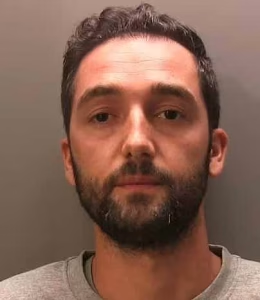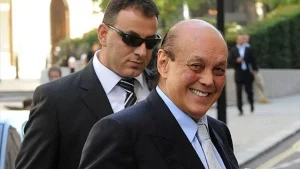Forensic Expert Witness Services of the Year 2016: Lawyer Monthly Magazine
Dr John Douse
BA, MA, D,Phil (Oxford), FRSC, FCSFS, F ChromSoc, MIExpE, MEWI.
I provide expertise in the fields of explosives, gunshot residue, drugs, toxicology, DNA and forensic chemistry. A full account of my casework including comments on my performance by instructing parties can be found @ forensic-expert.org.
After Oxford, my forensic experience included 14 years at the Metropolitan Police Forensic Science Laboratory and the Forensic Explosives Laboratory, 16 years as an independent forensic expert, and 25 years military experience in the reserve (including experience culminating in becoming a Special Forces regimental demolition instructor).
My research pioneered the current methods used for screening forensic extracts for traces of explosives, organic gunshot residue, and date rape drugs, along with the development of methods for the investigation of sexual offences.
Asa result of this research, carried out with my ever more sensitive detection procedures, I introduced, the quality control procedures, involving the use of clean room technology in forensic trace analysis, and which procedures are now used world-wide in all applications of forensic trace analysis (e.g. DNA).
This research culminated in my analyses carried out in the investigation of the Pan Am 103 Incident (Lockerbie), Hyde Park Bombing and Libyan Embassy siege among many other cases.
The edge that I bring to forensic expert witness work arises as a result of my ability to routinely exceed the expertise of other experts.
This is achieved due to: a more comprehensive knowledge of the most very recent peer reviewed literature, my prior research and also practical expertise in each subject, the sheer degree to which each and every case is investigated (described by one defendant (in 2016) who was acquitted, as being “relentless"), and the ability, as a result of long experience in dealing with very complex cases, to produce concise effective reports to tight deadlines, even in the most complex and demanding cases, often where expertise in several different areas is urgently required.
The ability to include the very latest published research results (including those released just before, and even during the trial itself) is often a game changer, as new fresh insights frequently emerge as a result of such novel publications.
I am called upon to provide expert evidence in the most complex and serious of criminal cases (murders, major terrorist incidents, rape, assaults, drug seizures, Coroners inquests, high value insurance claims, HSE prosecutions of companies, repatriations from Syria etc.), and I have also contributed scientific evidence to several major public enquiries. I am often called in at very short notice, when other experts have been unable to assist the Court, and also am instructed by private individuals as a result of their analysis of my performance detailed on my web site.
Since the Lawyer Monthly award, probably one of the best examples of my work in the field of explosives was completed, and which involved an attempted criminal prosecution of a major international defence firm.
In this case, logical analysis and discussion of the evidence with the opposing expert, resulted in all of the referred complaints having been accepted to have been without scientific foundation. This outcome resulted in the saving of many millions of pounds in fines, and where the defence team described themselves as “having been delighted” with every aspect of my work.
What are the most common cases that you deal with in regard to forensic chemistry?
I deal with the most complex criminal cases, (often high profile), where there is a significant element of possible doubt, and where the consequences of being found guilty are likely to attract the highest penalties.
This forensic casework requires extremely detailed analyses of all scientific and circumstantial evidence and which can routinely take anything from 100-400 or more hours work. It should be noted that the analysis of the circumstantial details of cases if often critical in regard of the significance of traces of materials such as explosives, sexual offences traces and DNA. Thus such exhaustive investigations in some DNA cases have resulted in e.g. the finding that complainants may have had unrestricted access to crime scenes between the time of the claimed offence and the scenes of crime investigation.
It is readily apparent, in the cases presented to me for investigation, that if detailed and thorough investigation were replaced by a simple few hours of analysis, and acceptance of the prosecution findings at face value, then it is likely that this could in some cases result in erroneous trial conclusions.
Examples of my experience in such matters are a euthanasia case (2016), where the charge of murder was dropped upon my revealing, at the defence examination, that the presence of a prescribed, very powerful and hazardous drug, (fentanyl), had been missed by both the prosecution study and analysis of the case.
This case also exemplifies the current serious underfunding of the Legal Aid Authority, as one quarter of my fees could not be paid, (i.e. were required to be carried out pro-bono) and which situation should be noted to affect a significant proportion of all of the cases that I am involved in, regardless of the critical importance of my work to the Court in achieving the true and correct case outcome.
A similar example of the need for the thorough examination of the circumstances of every case occurred also in 2016, where a charge of death by dangerous driving appeared clear cut, but was however found, upon further investigation, to have been likely to have been due, in most part, to the very poor state and design of the vehicle, and also where much, if not most, of the drug and alcohol use appeared to have been post incident.
This situation was only revealed by my repeated and careful questioning of the highly traumatised defendant in prison, a procedure undertaken much against the considered opinion of the Court.
A further example of the importance of thoroughness in investigation involved an explosives case, where an estimated 250,000 pages of downloads were rapidly prioritised to 18,000 significant pages, then summarised into three reports (220, 96 and 26 pages each) and where all section 58 charges were dropped as a result of my detailed analysis.
What do you find are the most difficult cases to provide analysis for? How do you navigate these complexities?
The most difficult cases occur where time is extremely short, i.e. when instruction is received just prior to trial or mid trial.
An example of such a situation was a complex case involving chemicals, fireworks, explosive manufacture, cannabis cultivation, and medical cannabis usage by a vulnerable adult. In this case potential instruction had occurred six months before the trial at the Old Bailey, and where the report of another expert, (instructed in my place), was subsequently found to have been unable to assist the Court.
Instruction ten days before the trial (including 1000 pages, three defence visits all over the country, examination of many hundreds of exhibits, and the need to interview of the defendant - 100 Hours) resulted in the preparation of two reports (one involving explosives, and one regarding cannabis cultivation and medical cannabis usage), with the outcome that the serious explosives charges were replaced by a suspended sentence and a fireworks ASBO.
You have years and years of experience in several laboratories, from explosives to police labs; how do you feel this has contributed to your extensive leadership in this legal segment?
The length of experience has led to the ability to very quickly read and summarise vast numbers of pages of case files and downloads (the latter skill often being due to having previously used such downloads practically (e.g. in military explosive trials) or having read and reported on them in previous trials).
The ability and the time (as an independent expert) to search the internet effectively, without fail and in every case, in order to access the most recent papers (these sometimes being published up to the day of the presentation of evidence) and which can influence the trial outcomes, is also critical.
An example was information on the reported occurrence of instantly forming “super dense fogs” nucleating on solid particulates. Interestingly the experience of such instantly forming “super dense” fogs arose out of a prior military experience during a live ammunition training ambush exercise, on a cold November night, and where a rocket flare was observed to have caused immediate white out of the range precluding the ability to engage the targets.
The ability to draft very extensive reports (often in several areas of expertise and which may overlap) and that have the correct balance in regard of assisting the court rapidly is also important, especially when time is very short.
The ability to consider the case details from the view of the suggested intention, (e.g. by ascertaining the optimum ways of administering toxins such as ricin or nerve agents, or the most effective ways of concealing polonium), is also a critical skill and that is highly related to the experience of operating a forensic laboratory, where the possibility of every conceivable toxin or explosive must be considered to ensure that traces are not missed.
The ability to assist Counsel in Court, in a timely, efficient and rapid manner, through the provision of a wealth of challenges during the live prosecution evidence is also critical.
A recent example (August 2016) involved the need to analyse, mid trial, a notebook containing over 700 references to different legal high type drugs, and also herbal and ancient native traditional psychoactive compounds; and which was required to be carried out continuously over a week using a hotel bedroom as an office, with the production of several reports to very tight deadlines.
It should be noted that often the ability to analyse and correlate case evidence from a general scientific point of view is the skill that is required, as the cause of an effect or trace may have an origin that is not obvious to a lay instructing legal team.
Thus an issue regarding the appearance of a pair of trainers in a photograph (carried out on the last day of a six month murder trial) turned out to involve the different light in the photographic studio (compared to the scene at night) causing other patterns to arise by fluorescence (an area of chemical expertise) thus preventing an unequivocal comparison (resolved by repeating the prosecution photography of the exhibits on the last night of the trial).
Similarly an accusation of deliberate murder by poisoning by a care home was revealed to have been likely to have naturally arisen as a result of a pharmacogenetic cause resulting in the victim being unable to excrete the prescribed tranquiliser in question.
In the case of explosives the practical military experience of making and testing improvised explosives devices, (at times when such activity was authorised by the Secretary of State for Defence), having instructed others in the creation of such devices, the rehearsal of the use of such devices under circumstances parallel to those that defendants are accused, actual use of clandestine recipes, and also chemical expertise in the synthesis procedures used in explosive preparation, are all critical to being able to assist the court in such matters.
Over your years of experience what have you found to be the biggest and most impacting changes in technology and infrastructure that have helped your work in forensic science?
- The process of the experts for the prosecution and defence, being required to prepare a list of points of agreement and disagreement in regard of the specialist evidence, undoubtedly has been the greatest improvement in Court procedure; especially as the complexity of scientific evidence increases, and more becomes known and understood as a result of the ever increasing rate of world-wide research. This is such an important process that it is believed that it should be made official that to have omitted this process should constitute a breach of procedure.
By this means the agreed scientific evidence can be prepared for the Court, and can allow the Judge to control the introduction of the agreed evidence to the Jury, in a manner appropriate to each case.
- The development of the World Wide Web has also been one of the most influential resources that has assisted the analysis of forensic casework.
Thus immediate access can be gained, from an office, to all of the most recent publications; even permitting the identification of publications that can reveal new insights that can alter the outcome, right up to the trial date or even mid trial.
This phenomenon can occur in regard of the subjects both in my areas of expertise, and also in areas of significance outside of my expertise; an example, only a few days ago, being the publication of the identification of the mechanism of cardiac death of individuals during defaecation due to use of the Valsalva manoeuvre: a factor in possible alternate explanations of death due to stimulant drug abuse.
It also should be noted that it has now become critical, in this period of austerity, that every forensic expert (who has had the opportunity to read the entire casefile and medical notes, attend defence examinations, and who has had the opportunity to interview the defendant) should realise that they may have been the only scientifically trained person who will ever access all aspects of the trial evidence; and therefore that they should be constantly aware of the need for any significant forensic evidence in any area of expertise that might assist the Court, to be brought to its attention for consideration by other appropriate experts. It should be noted, in this regard, that I am frequently asked to perform this service by instructing Counsel.
Such an example of this phenomenon was the death by driving case previously mentioned, and where questioning of the defendant by myself (additionally in regard of the circumstantial evidence in the case) revealed that the vehicle was seriously under-maintained and possibly ill designed.
This finding allowed the appropriate vehicle expert, who had not had the opportunity to interview the defendant, to further investigate and opine on this new evidence and hence to influence the case outcome significantly.
In this regard the ability to relate to a highly traumatised individual and gain their confidence in order to try to elicit the truth is yet another essential skill of a forensic expert.
- The advances in Short Tandem Repeat DNA technology has inevitably advanced the forensic study of criminal scenes.
It should be noted that while in England DNA-17 technology has been introduced, which provides greater discrimination especially in mixed profiles, the Scottish Laboratory now has deployed DNA-24 which has potentially even greater discriminatory power.
It should be noted that reproducibility of duplicate profiles will need to be improved if human interpretation is to be replaced in part by machine interpretation.
- The concept of UHPLC combined with Tandem Mass Spectrosopy (especially at high resolution) has allowed the more facile screening of forensic samples for very low traces of drugs.
However it should be noted that the need is once more being recognised (knowledge lost on the closure of the Forensic Science Service) that in forensic science investigations, samples must be analysed for every possible drug, and not just for a fixed number of the variants most likely to be encountered.
An example of such a situation was the euthanasia case mentioned above, where fortunately as a result of my thorough study of the case file, and re-interrogation of the electronic mass spectroscopic record at the defence examination, the more likely true reason for the death in this case (the presence of fentanyl) was able to be ascertained, and the murder charge abandoned.
However it should additionally be noted, in this case, that it was fortunate that this was a prescribed drug and thus its administration was therefore recorded.
Such an opportunity in other cases might not be available if an illegal drug was implicated, and where the possibility can be seen to have the potential to exist that a significant contributing toxic compound might have the potential to remain unidentified.
As an expert witness on the array of chemicals, materials, and the impacts thereof, to what extent do you get to engage the full capacity of your expertise?
Every case, however seemingly simple, is unique and must be exhaustively investigated in regard of circumstantial, medical and analytical evidence; in order to eliminate possible innocent factors and occurrences that could affect the outcome of the case.
This requires in every case a reanalysis of the entire literature of the scientific subjects involved, in order to be certain that no new research has been published and that might have the potential to provide new insight into the case situation.
A recent example of this was the publication of a critical new detailed paper on research into the mechanism of TATP synthesis and that was published the day before a report was completed.
In this regard instructing Solicitors and Counsel need to be aware that brief analysis of the case by a lay person can indicate which type of expert to instruct; however an alert and experienced forensic expert can often provide a wealth of other evidence that can often greatly assist the case.
Do you often work alone in your instructions or do you work alongside a team? What are the benefits of this?
Initially I work alone, under guidance by the instructing solicitor and Counsel, as the intensity of the study and work leading up to the preparation of a report precludes team work at this initial stage.
Later e.g. at barristers’ conferences, and also at court in expert witness conferences, the opportunity to work as a team becomes more prominent and assistance is often given to the Court additionally by this means.
Many novel defence strategies are discovered for the first time by myself (e.g. the gunshot residue defence that police cars, personnel and premises etc. had the potential to be likely to have become contaminated by gunshot residue and propellant components, this having been achieved as a result of my multidisciplinary expertise through reading research papers in the field of explosives).
I retain such observations for use when I am instructed, and at this time possess many scientific defences in a variety of disciplines that other experts may have yet to become aware of.




















